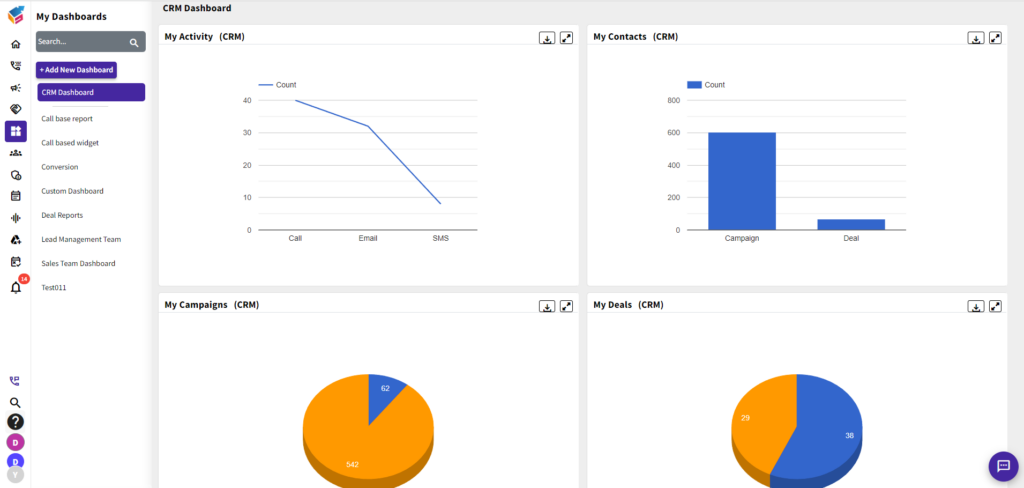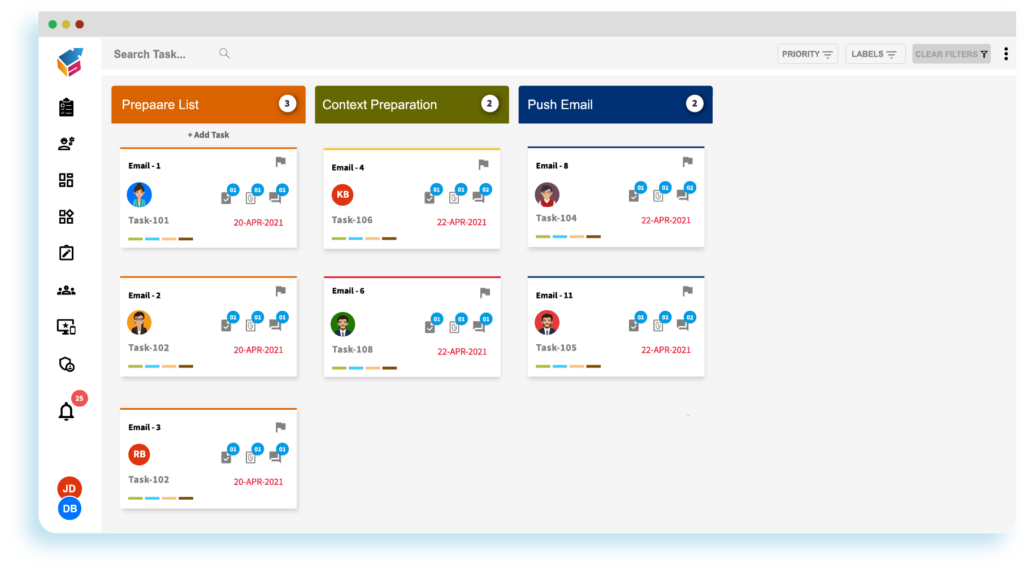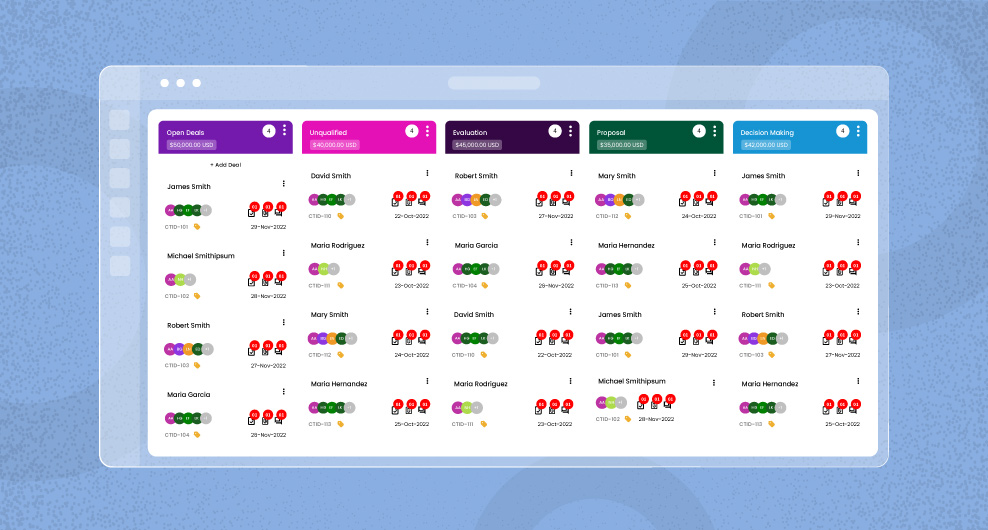Table of Contents
In the world of sales, success depends on many factors, including the ability to establish a strong connection with potential customers and convert them into loyal clients. One of the most effective ways to achieve this is by creating a well-designed sales cadence.
A sales cadence is a structured sequence of touchpoints between a sales representative and a potential customer. It includes different communication channels such as emails, phone calls, and social media messages, all designed to build relationships, foster engagement, and ultimately drive conversions.
However, creating a successful sales cadence can be challenging, and it requires careful planning and execution.
In this blog post, we will provide you with an 8-step framework to develop a result-driven sales cadence that will help you achieve your sales goals. From identifying your target audience to tracking and analyzing your performance, we will cover all the essential elements that go into creating a successful sales cadence.
How do I start a sales cadence?
So, let’s dive in and explore how you can craft a result-driven sales cadence to drive growth and revenue for your business.
The 8 Step Framework to Build an Effective Sales Cadence
Building an effective sales cadence requires a strategic approach that is tailored to your target audience and their specific needs.
Here is an 8-step framework that will help you develop a result-driven sales cadence:
Define your Cadence Objective
The first step in building an effective sales cadence is defining your cadence objective. This involves setting a clear and specific goal that you want to achieve through your cadence.
Your cadence objective should align with your overall sales strategy and be SMART (specific, measurable, achievable, relevant, and time-bound). This means that your objective should be well-defined, quantifiable, realistic, relevant to your business, and have a deadline for completion.
To define your cadence objective, you need to identify the specific outcome you want to achieve. For example, if you want to generate new sales leads, your objective could be to increase the number of qualified leads by a certain percentage within a specific timeframe. If you want to close more deals, your objective could be to increase your conversion rate by a specific percentage within a certain timeframe.
Once you have defined your objective, you can begin to research your target audience and understand their needs, pain points, and buying behaviors. This will help you determine the best communication channels, messaging, and touchpoints to achieve your goal.
It’s important to note that your cadence objective may change over time as you gather more data and insights about your target audience and sales process. Therefore, it’s crucial to monitor your progress and adjust your cadence accordingly to achieve your desired results.
Evaluate the Channels and Resources at your Disposal
Once you have defined your cadence objective, the next step is to evaluate the communication channels and resources at your disposal. This will help you determine the best ways to reach your target audience and deliver your messages effectively.
To evaluate the channels and resources, you should consider the following:
- Communication Channels: There are several communication channels available, such as email, phone, social media, direct mail, and video conferencing. You should assess which channels are most effective for your target audience and consider using a multi-channel approach to maximize your reach and engagement.
- Sales Team: Evaluate the skills and capacity of your sales team to determine which channels and touchpoints they are best suited to handle. For example, if your sales team is more comfortable with phone calls, you may want to prioritize phone calls in your cadence.
- Tools and Technology: Consider the sales and marketing tools and technology at your disposal, such as customer relationship management (CRM) systems, marketing automation platforms, and sales enablement software. These tools can help streamline your cadence and provide valuable insights and data to measure your success.
- Budget: Your budget will also play a crucial role in determining the channels and resources you can utilize in your cadence. Evaluate the costs of each channel and tool and allocate your resources accordingly.
Understand Your Prospects
The third step in building an effective sales cadence is to understand your prospects. This involves researching and analyzing your target audience to gain insights into their needs, pain points, motivations, and buying behaviors.
To understand your prospects, you should consider the following:
- Demographics: Identify the demographic characteristics of your target audience, such as age, gender, location, education, and occupation. This information can help you tailor your messaging and communication channels to better resonate with your prospects.
- Psychographics: Understand the psychographic factors that influence your prospects’ behavior, such as their values, beliefs, interests, and personality traits. This information can help you create more personalized and targeted messaging that connects with your prospects on a deeper level.
- Pain Points: Identify the pain points and challenges that your prospects are facing, such as inefficiencies, wasted time, or missed opportunities. This information can help you position your product or service as a solution to their problems and demonstrate the value you can provide.
- Buying Behavior: Analyze your prospects’ buying behavior, such as their preferred communication channels, decision-making process, and objections. This information can help you create a cadence that aligns with your prospects’ preferences and addresses their concerns at each touchpoint.
Articulate your Value Proposition
The fourth step in building an effective sales cadence is to articulate your value proposition. A value proposition is a statement that describes the unique benefit that your product or service provides to your customers.
To articulate your value proposition, you should consider the following:
- Identify your target audience: Determine the specific audience or segment you are targeting with your product or service.
- Identify the benefits: Identify the unique benefits that your product or service provides to your target audience. These benefits should be specific and measurable and should address the pain points or challenges that your audience is facing.
- Differentiate from competitors: Determine how your product or service is different from your competitors and how your unique features or benefits provide more value to your customers.
- Craft a compelling message: Once you have identified your target audience, benefits, and points of differentiation, craft a compelling message that effectively communicates your value proposition. Your message should be clear, concise, and tailored to your target audience.
Evaluate all the Levers of Influence at your Disposal
The fifth step in building an effective sales cadence is to evaluate all the levers of influence at your disposal. A lever of influence is a tactic or strategy that you can use to persuade or influence your prospects to take a specific action, such as making a purchase or booking a demo.
To evaluate the levers of influence at your disposal, you should consider the following:
- Social proof: Leverage social proof, such as customer testimonials, case studies, and reviews, to demonstrate the value and effectiveness of your product or service.
- Scarcity: Use scarcity to create a sense of urgency and encourage your prospects to act, such as limited time offers or product availability.
- Authority: Establish your authority and expertise in your industry or niche by sharing relevant content, such as blog posts, white papers, or research reports.
- Reciprocity: Use reciprocity to build trust and goodwill with your prospects by offering something of value, such as a free trial, consultation, or eBook.
- Consistency: Encourage consistency by asking your prospects to make small commitments or take small actions that align with your goal, such as subscribing to your newsletter or following you on social media.
Planning your Cadence
The sixth step in building an effective sales cadence is planning your cadence. In this step, you will determine the number of touches or interactions you will have with your prospects, the purpose of each touch, and the best practices for crafting your messages.
To plan your cadence, you should consider the following:
- Determine the number of touches: Determine the number of touches or interactions you will have with your prospects. This could be through various channels such as email, phone calls, social media, or direct mail.
- Define the purpose of each touch: Define the purpose of each touch and what you hope to achieve with it. For example, your first touch could be an introduction or a cold outreach, while subsequent touches could be to provide value or to address objections.
- Choose the appropriate channel for each touch: Choose the appropriate channel for each touch based on your prospect’s preferences and behavior. For example, some prospects may prefer phone calls while others may prefer email.
- Craft effective messages: Craft effective messages that are tailored to each touch and channel. Your messages should be personalized, relevant, and focused on addressing your prospect’s pain points and needs.
- Set a cadence schedule: Set a cadence schedule that outlines the frequency and timing of each touch. This will help you stay organized and ensure that you are following up with your prospects consistently.
Copywriting Best Practices
The seventh step in building an effective sales cadence is to understand copywriting best practices. Copywriting is the art of crafting written messages that persuade and influence your prospects to act. In this step, you will learn some best practices for crafting effective messages that resonate with your prospects.
Here are some copywriting best practices to keep in mind:
- Keep it simple: Use simple, straightforward language that is easy to understand. Avoid jargon or complex terminology that may confuse or overwhelm your prospects.
- Focus on benefits: Focus on the benefits of your product or service rather than just its features. Explain how your product or service solves a problem or meets a need for your prospects.
- Use storytelling: Use storytelling to make your messages more engaging and memorable. Share stories or examples that demonstrate the value of your product or service.
- Personalize your messages: Personalize your messages by using your prospect’s name and referencing their specific needs or pain points.
- Create a sense of urgency: Create a sense of urgency by using time-sensitive language or limited-time offers. This can encourage your prospects to act and move forward in the sales process.
- Use a clear call-to-action: Use a clear call-to-action that tells your prospects exactly what to do next. Use action-oriented language and make it easy for your prospects to take the desired action.
Use Sales Engagement Tools
The eighth and final step in building an effective sales cadence is to use sales engagement tools. Sales engagement tools are software platforms that help automate and streamline your sales process, allowing you to reach more prospects in less time.
There are many different types of sales engagement tools available, but some of the most common include:
- CRM (Customer Relationship Management) software: CRM software allows you to track and manage your interactions with prospects and customers. This can help you stay organized and ensure that you are following up with prospects consistently.

- Sales automation software: Sales automation software can automate repetitive sales tasks such as sending follow-up emails or scheduling appointments. This can help you save time and focus on more high-value activities like building relationships with prospects.
- Email tracking software: Email tracking software can track when prospects open and engage with your emails. This can help you understand which messages are resonating with your prospects and adjust your sales cadence accordingly.

- Sales intelligence software: Sales management software can provide you with valuable insights into your prospects, such as their contact information, job title, and company size. This can help you tailor your messages and approach to each prospect.
By using sales automation tools, you can streamline your sales process and maximize your efficiency and effectiveness. This can help you reach more prospects, build stronger relationships, and ultimately drive more sales.
By following this 8-step framework, you can build a result-driven sales cadence that will help you connect with your prospects, build relationships, and drive conversions.




